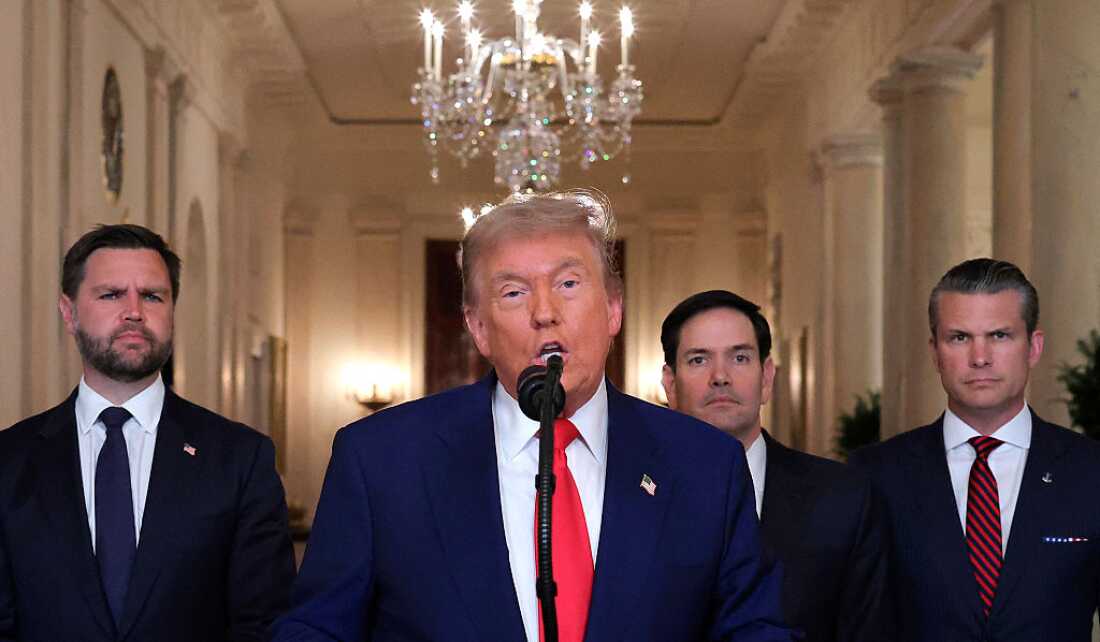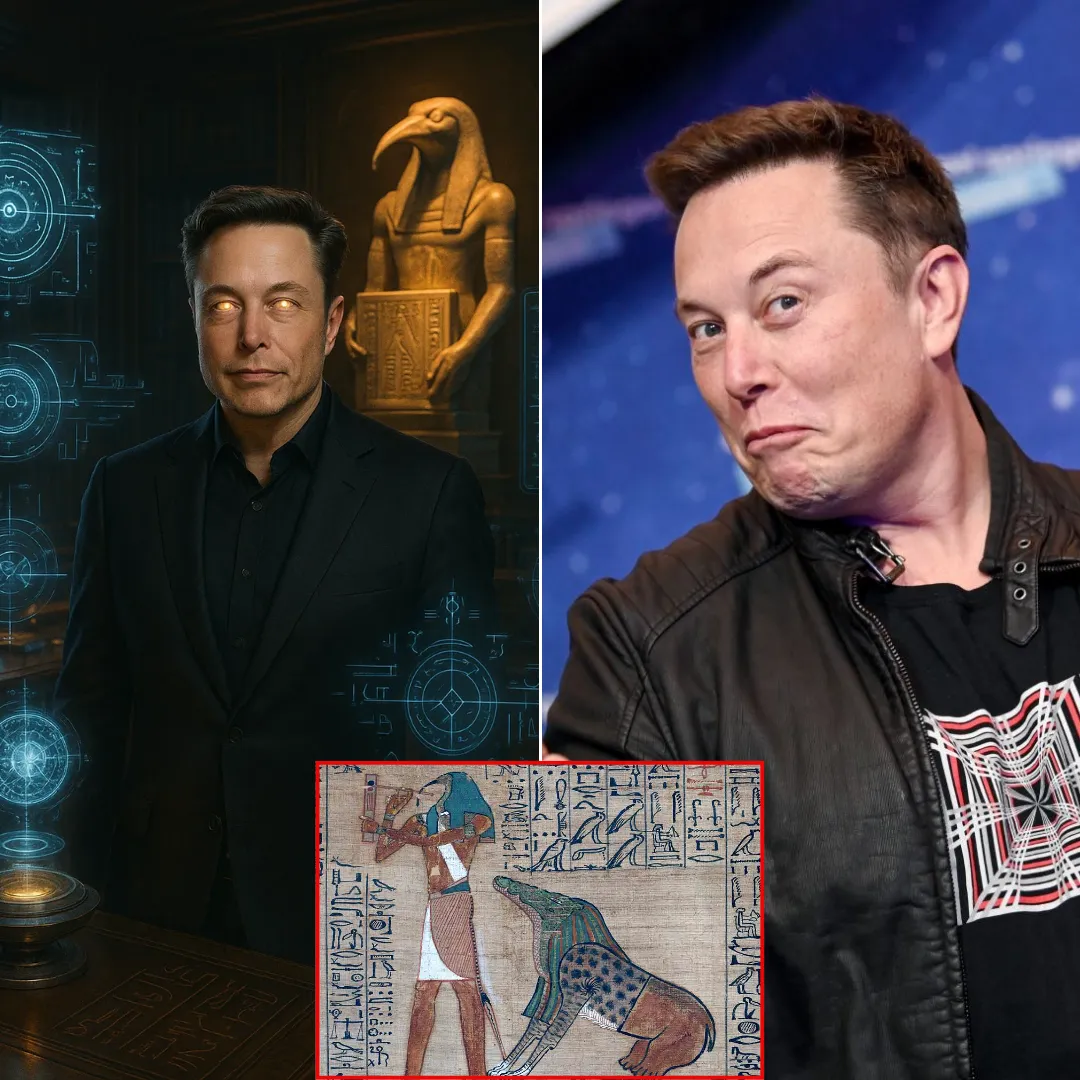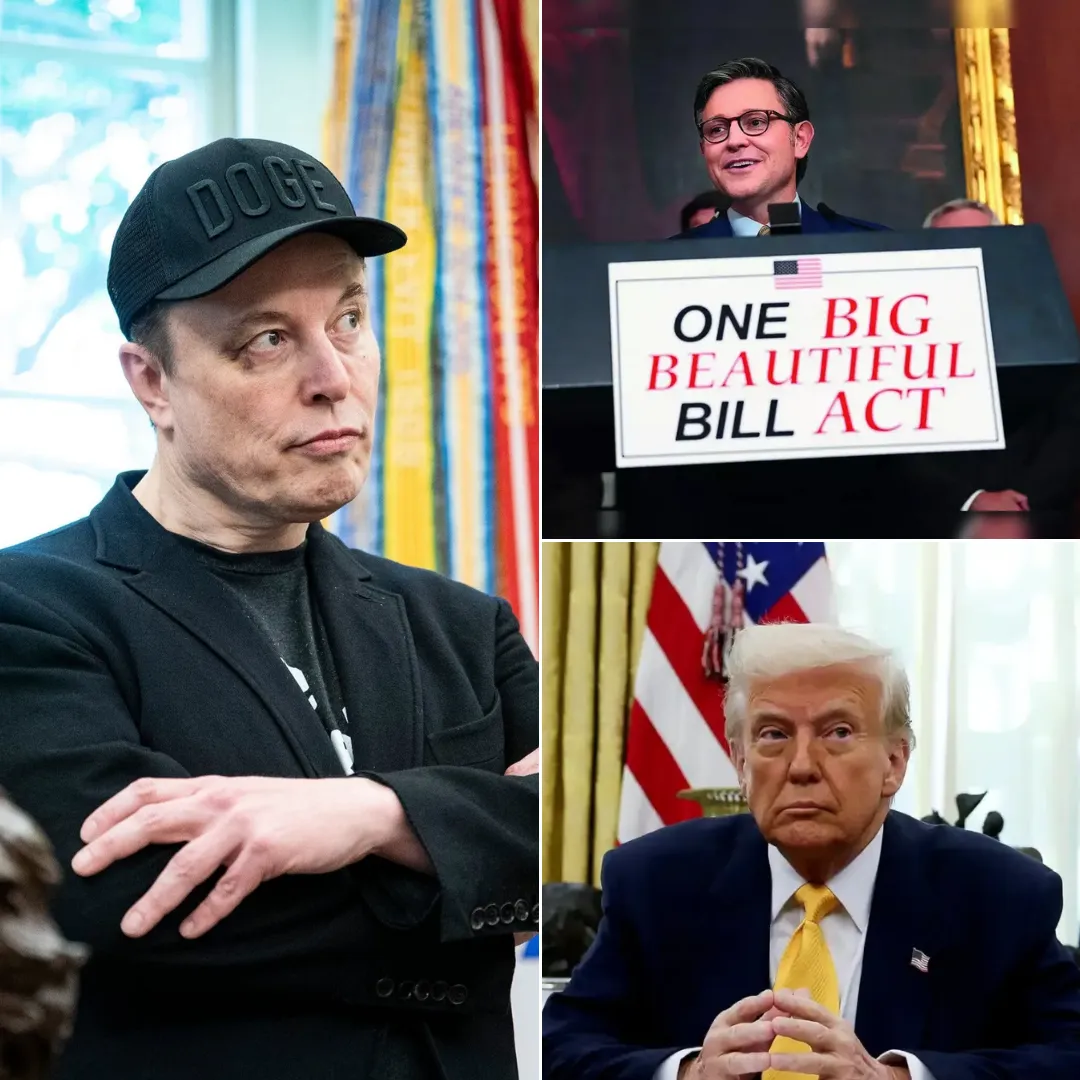
In a dramatic late-night address from the White House, President Donald Trump confirmed to the American people—and the world—that the United States had launched what he described as “massive precision strikes” on three of Iran’s most fortified nuclear sites: Fordo, Natanz, and Isfahan. The announcement followed hours of speculation and global tension as reports of explosions and military aircraft activity near Iranian territory spread through international media and social platforms.
Standing beside Vice President JD Vance, Defense Secretary Pete Hegseth, and Secretary of State Marco Rubio, President Trump proclaimed the operation a "spectacular military success," asserting that the United States had completely destroyed Iran’s key nuclear enrichment capabilities in a move he called both necessary and overdue.
Trump began his remarks by confirming the scale and purpose of the operation. “A short time ago, the U.S. military carried out massive precision strikes on the three key nuclear facilities in the Iranian regime: Fordo, Natanz and Isfahan,” he said.
These names, Trump added, had been synonymous with terror for years, referencing Iran’s ongoing pursuit of nuclear weapons in defiance of international agreements and inspection regimes. With stern gravity, he announced, “Our objective was the destruction of Iran's nuclear enrichment capacity, and a stop to the nuclear threat posed by the world's No. 1 state sponsor of terror.” The gravity of the moment was clear as he revealed, “Iran's key nuclear enrichment facilities have been completely and totally obliterated.”

This preemptive attack on Iranian infrastructure marks one of the most significant military actions of Trump’s second term. The President characterized the strikes not only as a matter of national security but as a turning point in a prolonged regional conflict that he claimed has cost American lives and emboldened Iran’s hostility.
Referencing the bloodshed over the past two decades, Trump reminded viewers of Iran’s support for militias and terror networks, its chants of “death to America,” and its long trail of American casualties, particularly through the deployment of roadside bombs across Iraq and Afghanistan. He condemned Iran’s late top general Qasem Soleimani, stating, “So many were killed by their general, Qasem Soleimani. I decided a long time ago that I would not let this happen.”
Trump’s message to the Iranian leadership was unambiguous. “Iran, the bully of the Middle East, must now make peace,” he said. “If they do not, future attacks will be far greater and a lot easier.” He made it clear that this was not a one-off strike, but the first salvo in a broader strategic doctrine aimed at deterring Iranian aggression once and for all.
“There will be either peace or there will be tragedy for Iran, far greater than we have witnessed over the last eight days,” he declared, hinting that more operations had been planned and that the military had the capability to act swiftly.
The tone of the speech oscillated between defiance and triumph, particularly as Trump praised the U.S. Armed Forces. “There is no military in the world that could have done what we did tonight. Not even close,” he said. “There has never been a military that could do what took place just a little while ago.”

He described the execution of the mission with reverence, extending gratitude to the U.S. pilots who flew “those magnificent machines,” and praised the entire armed forces for an operation “the likes of which the world has not seen in many, many decades.” Trump specifically named General Dan “Raizin’” Caine, the chairman of the Joint Chiefs of Staff, as a key architect of the mission, calling him a “spectacular general.”
Another notable aspect of Trump’s speech was the recognition of America’s close coordination with Israel. He credited Prime Minister Benjamin Netanyahu as a crucial partner in the operation, stating, “We worked as a team. Like perhaps no team has ever worked before.” He did not detail the exact nature of Israel’s involvement, but praised the Israeli military’s contributions and suggested the unity between both nations had been vital in neutralizing what he described as an existential threat.
Trump’s rhetoric also held spiritual undertones, underscoring his longstanding appeals to faith and patriotism. As he wrapped up his address, he turned heavenward: “I want to just thank everybody, and in particular, God. I want to just say, we love you, God, and we love our great military. Protect them.” He concluded with a sweeping invocation: “God bless the Middle East. God bless Israel, and God bless America.”
Though Trump made no mention of casualties—either American, Iranian, or civilian—he emphasized that the strikes were conducted with "precision, speed and skill," implying that the operation was designed to minimize collateral damage. Still, international observers remain skeptical, as reports continue to trickle in from Tehran and satellite images show widespread destruction in the targeted areas. The Iranian government, while yet to release an official statement, has already begun moving anti-air defense systems and mobilizing troops around strategic sites.

Tomorrow morning, Defense Secretary Pete Hegseth and General Caine are scheduled to hold a press briefing at the Pentagon, where they are expected to present further details of the operation, including intelligence justifications, damage assessments, and strategic outcomes. That press conference will likely set the tone for the next phase of the conflict—or potential peace talks—depending on Iran’s response.
While domestic reactions are still unfolding, early indications suggest Trump's base is rallying behind him. The airstrike, announced just as America heads into an election year climate filled with geopolitical uncertainty, may become a defining moment of his second term. Supporters have already taken to social media with hashtags like #PeaceThroughStrength and #AmericaStrikesBack, while critics warn of potential escalation and retaliation.
Strategically, Trump’s decision to strike could be interpreted as a culmination of years of mounting tensions, including Iran’s withdrawal from portions of the nuclear deal, the attacks on U.S. bases in Iraq, and Iran’s alleged complicity in Houthi drone attacks on Saudi oil facilities. By targeting the core of Iran’s nuclear ambitions, Trump appears to be betting that military dominance will force Tehran to the negotiating table—a classic application of the doctrine of peace through strength.
However, analysts warn that this move carries immense risk. Iran’s leadership, long defiant of Western threats, could respond with cyberattacks, proxy warfare through Hezbollah or militias in Iraq, or even missile launches targeting U.S. allies in the region. Some experts fear this operation may ignite a regional war, while others believe it may be the precise show of force needed to reset the balance of power.
For now, the world waits as night turns into day in the Middle East, and Tehran weighs its next step. The success of the U.S. operation is undeniable in military terms, but the political, humanitarian, and diplomatic consequences remain to be seen. In the words of Trump himself, “There are many targets left.” The implication is chilling, and the message unmistakably clear: this is not over.



